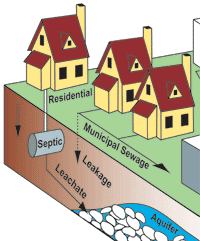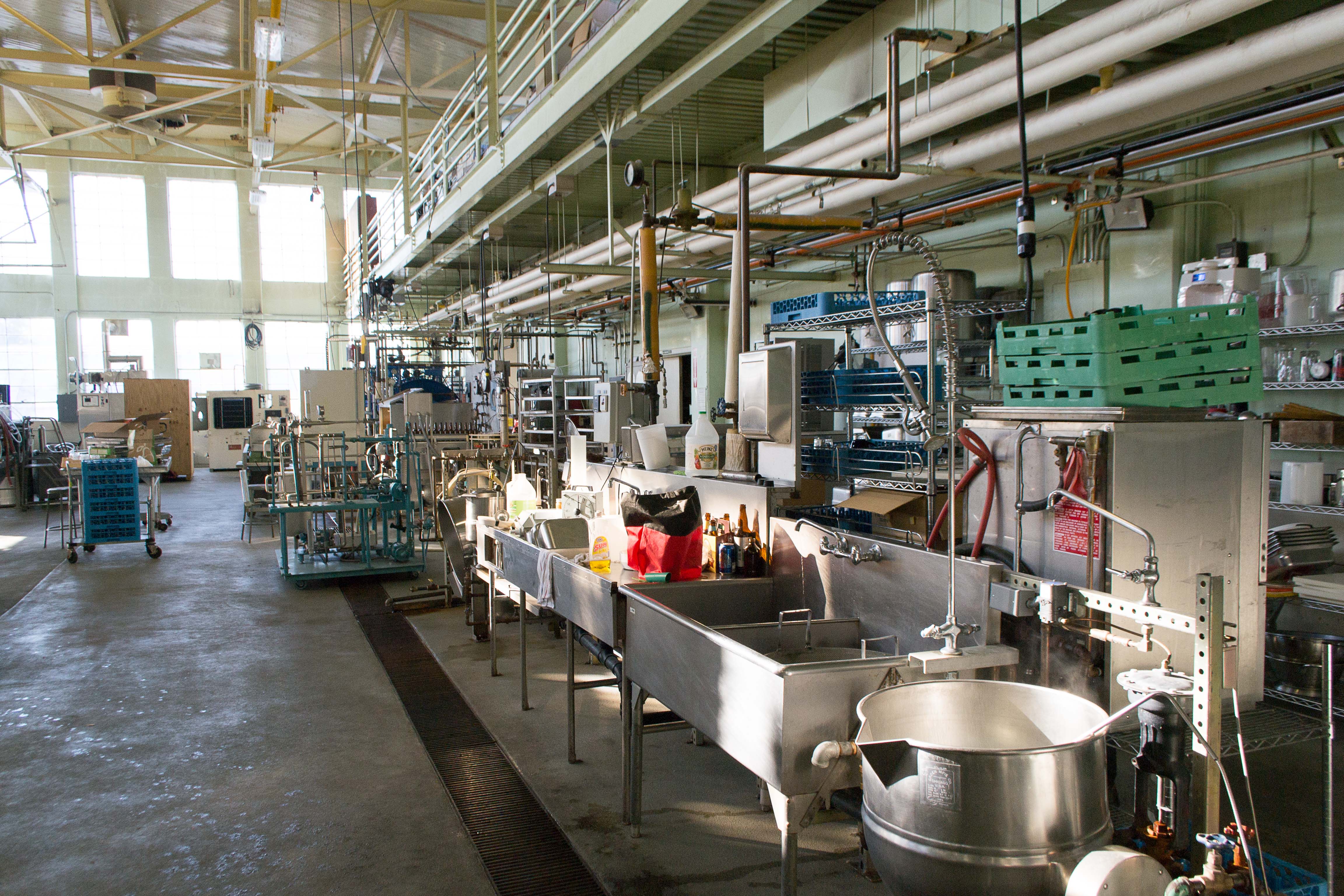
Occurrence, sources and fate of pharmaceuticals and personal care products and artificial sweeteners in groundwater
Sign Up to like & getrecommendations! Published in 2021 at "Environmental Science and Pollution Research"
DOI: 10.1007/s11356-021-12721-3
Abstract: Groundwater is considered as the main source for supplying the public drinking water in many countries and regions; however, pharmaceuticals and personal care products (PPCPs) and artificial sweeteners (ASs) found in groundwater can exert harmful… read more here.
Keywords: groundwater; personal care; care products; ppcps ass ... See more keywords

Novel application of multivariate standard addition method based on net analyte signal for quantification of artificial sweeteners in complex food matrices
Sign Up to like & getrecommendations! Published in 2019 at "Journal of Food Measurement and Characterization"
DOI: 10.1007/s11694-019-00269-3
Abstract: Multivariate standard addition method based on net analyte signal concept (SANAS) was found efficient to handle solute overlapping (direct interference) and matrix effect (indirect interference) when analyzing food additives. Aspartame, acesulfame-K, and saccharin are the… read more here.
Keywords: multivariate standard; addition method; standard addition; artificial sweeteners ... See more keywords

FTIR spectroscopy coupled with machine learning approaches as a rapid tool for identification and quantification of artificial sweeteners.
Sign Up to like & getrecommendations! Published in 2019 at "Food chemistry"
DOI: 10.1016/j.foodchem.2019.125404
Abstract: Fourier transform infrared (FTIR) spectroscopy calibrations were developed to simultaneously determine the multianalytes of five artificial sweeteners, including sodium cyclamate, sucralose, sodium saccharin, acesulfame-K and aspartame. By combining the pretreatment of the spectrum and principal… read more here.
Keywords: machine; ftir spectroscopy; spectroscopy coupled; rapid tool ... See more keywords

Non-caloric artificial sweeteners exhibit antimicrobial activity against bacteria and promote bacterial evolution of antibiotic tolerance.
Sign Up to like & getrecommendations! Published in 2022 at "Journal of hazardous materials"
DOI: 10.1016/j.jhazmat.2022.128840
Abstract: Non-caloric artificial sweeteners are being widely used as safe table sugar substitutes with highly intensive sweetness but low calories. Previous studies have suggested that some of the sweeteners can alter the gut microbiota composition and… read more here.
Keywords: antibiotic tolerance; tolerance; non caloric; antimicrobial activity ... See more keywords

Non-caloric artificial sweeteners modulate conjugative transfer of multi-drug resistance plasmid in the gut microbiota
Sign Up to like & getrecommendations! Published in 2022 at "Gut Microbes"
DOI: 10.1080/19490976.2022.2157698
Abstract: ABSTRACT Non-caloric artificial sweeteners have been widely permitted as table sugar substitutes with high intensities of sweetness. They can pass through the intestinal tract without significant metabolization and frequently encounter the gut microbiome, which is… read more here.
Keywords: gut; plasmid; non caloric; caloric artificial ... See more keywords

Sweets and Inflammatory Bowel Disease: Patients Favor Artificial Sweeteners and Diet Foods/Drinks Over Table Sugar and Consume Less Fruits/Vegetables.
Sign Up to like & getrecommendations! Published in 2023 at "Inflammatory bowel diseases"
DOI: 10.1093/ibd/izac272
Abstract: BACKGROUND While artificial sweeteners are deemed safe, preclinical studies indicate that artificial sweeteners contribute to gastrointestinal inflammation. Little is known about patients' perceptions and consumption of artificial sweeteners in inflammatory bowel disease (IBD). We surveyed… read more here.
Keywords: control; inflammatory bowel; ibd patients; fruits vegetables ... See more keywords

Classroom experiments with artificial sweeteners: growing single crystals and simple calorimetry
Sign Up to like & getrecommendations! Published in 2022 at "Acta Crystallographica Section E: Crystallographic Communications"
DOI: 10.1107/s2056989022007617
Abstract: An easily accessible experimental set-up to grow large single crystals of two sweeteners readily available in supermarkets, erythritol and xylitol, is described. The crystallization of these compounds illustrates the principles of crystallization by evaporation·The crystal-growing… read more here.
Keywords: single crystals; experiments artificial; classroom experiments; sweeteners growing ... See more keywords

Artificial sweeteners and cancer risk: Results from the NutriNet-Santé population-based cohort study
Sign Up to like & getrecommendations! Published in 2022 at "PLoS Medicine"
DOI: 10.1371/journal.pmed.1003950
Abstract: Background The food industry uses artificial sweeteners in a wide range of foods and beverages as alternatives to added sugars, for which deleterious effects on several chronic diseases are now well established. The safety of… read more here.
Keywords: cancer; food; artificial sweeteners; cancer risk ... See more keywords

Effects of artificial sweeteners on Lemna minor
Sign Up to like & getrecommendations! Published in 2018 at "Czech Journal of Food Sciences"
DOI: 10.17221/413/2016-cjfs
Abstract: Artificial sweeteners are common micropollutants in the aquatic environment. They were detected both in surface waters and in groundwater. Human toxicity has also been studied quite intensively but their ecotoxicity has not been studied so… read more here.
Keywords: artificial sweeteners; lemna minor; sweeteners lemna; effects artificial ... See more keywords

Artificial Sweeteners Reveal Septic System Effluent in Rural Groundwater.
Sign Up to like & getrecommendations! Published in 2017 at "Journal of environmental quality"
DOI: 10.2134/jeq2017.06.0233
Abstract: It has been widely documented that municipal wastewater treatment plant effluents are a major source of artificial sweeteners to surface waters. However, in rural areas, the extent to which septic systems contribute these same compounds… read more here.
Keywords: groundwater; septic system; system effluent; nottawasaga river ... See more keywords

Inhibitory Effects of Artificial Sweeteners on Bacterial Quorum Sensing
Sign Up to like & getrecommendations! Published in 2021 at "International Journal of Molecular Sciences"
DOI: 10.3390/ijms22189863
Abstract: Despite having been tagged as safe and beneficial, recent evidence remains inconclusive regarding the status of artificial sweeteners and their putative effects on gut microbiota. Gut microorganisms are essential for the normal metabolic functions of… read more here.
Keywords: protein; inhibitory effects; sweeteners bacterial; quorum sensing ... See more keywords